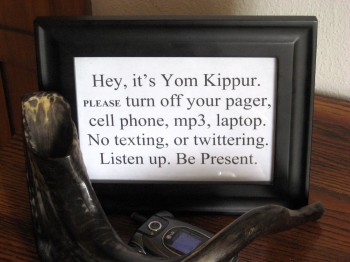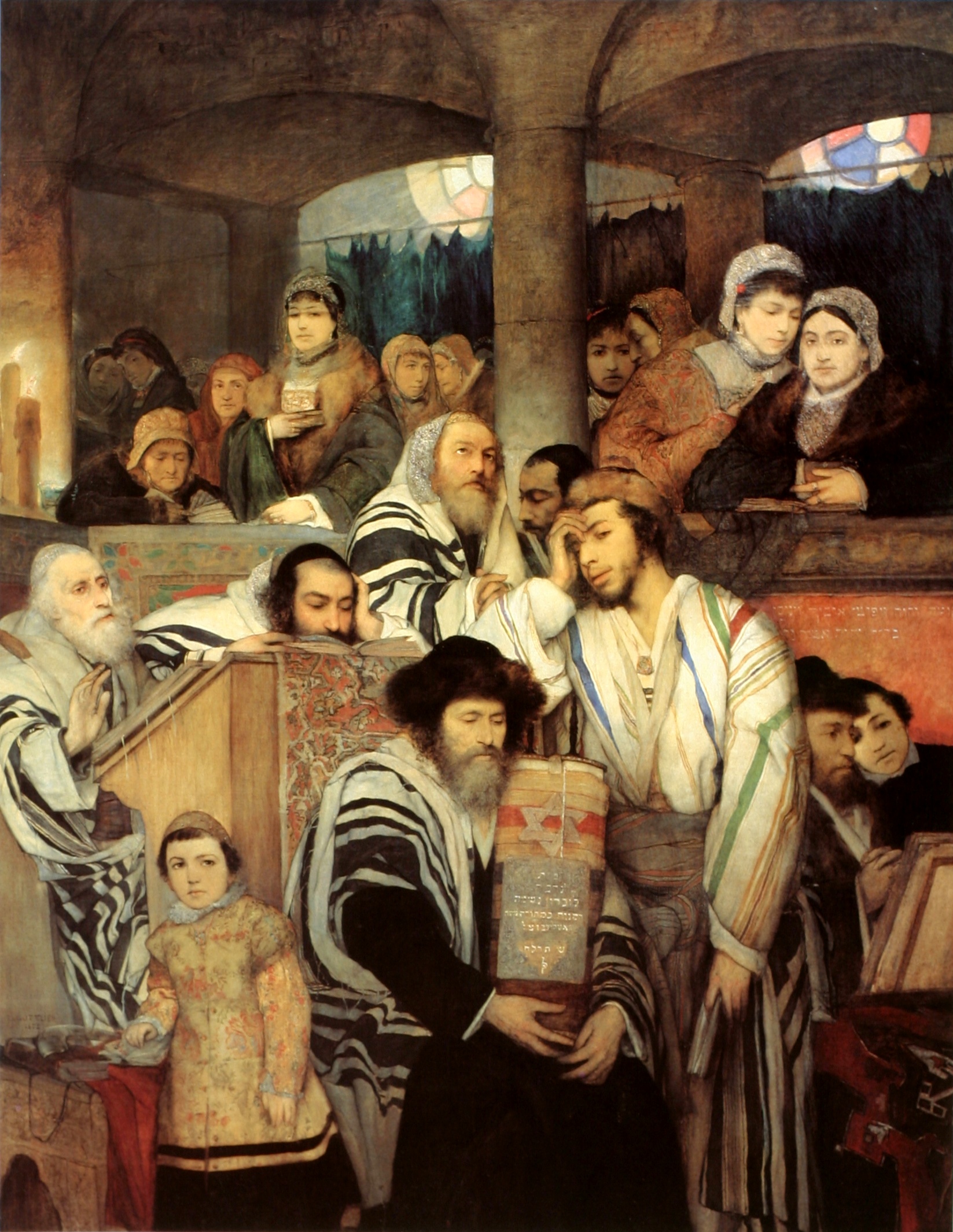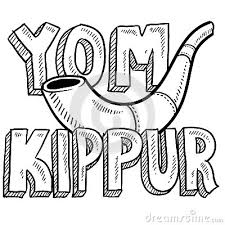Jewish Holidays and Festivals
What Is Yom Kippur, the Day of Atonement?
Concluding the “Ten Days of Repentance,” also known as the “Days of Awe” - Rosh Ha Shanah - Yom Kippur is a day where few Jews venture further than home and a house of worship. Beautifully, most Jews will forgo their usual routines. Instead of holding tickets to movies or concerts, they will have tickets for seats at a Kol Nidrei Service. On Yom Kippur, Jews fast from sunset to sunset.
Many Jews who do not observe any other Jewish custom will refrain from
work, fast and/or attend synagogue services on this day. The holiday is
instituted at Leviticus 23:26-32. It follows Rosh Ha Shanah, closing the penitential season.
The first step to do before Yom Kippur is to seek out and reconcile with friends, colleagues, family members and even enemies. Yom Kippur is the time to forgive and move on. “If we cannot forgive others,” said the Hassidic Master Israel Ba’al Shem Tov, “how can we expect God to forgive us?”
Additionally, while God can forgive us for our transgressions in the previous year — that is only transgressions against God. If you hurt someone in any way this past year, you must ask them for forgiveness. They alone can grant you atonement for the damage you caused them.
The latter is extracted from:
http://www.jewishjournal.com/rabbi_yonah/item/yom_kippur_guide_5776_2015_forgive_and_be_forgiven.
Chabad adds: "For nearly 26 hours Jews everywhere “afflict their souls” and spend the day in synagogue, praying for forgiveness.". They have a nice article on this: https://www.chabad.org/library/article_cdo/aid/177886/jewish/What-Is-Yom-Kippur.htm
 Yom
Kippur, the second High Holy Day in Judaism is probably the most
important holiday of the Jewish year. It occurs on the 10th day of
Tishri. Many Jews who do not observe any other Jewish custom will
refrain from work, dedicate a total fast and/or attend synagogue
services on this day. The holiday is instituted in Leviticus 23:26 et
seq. Yom
Kippur, the second High Holy Day in Judaism is probably the most
important holiday of the Jewish year. It occurs on the 10th day of
Tishri. Many Jews who do not observe any other Jewish custom will
refrain from work, dedicate a total fast and/or attend synagogue
services on this day. The holiday is instituted in Leviticus 23:26 et
seq.
| DO NOT WISH JEWS A HAPPY HOLIDAY ON YOM KIPPUR! |
Yom
Kippur reminds the pious how Avraham was reprieved after offering his
son in sacrifice. Very solemn, with anguish, it recapitulates the long
history of violence and humiliation to which Jews have been subjected.
Because they believe they must be forgiven by other men before they can
ask forgiveness of God, they make it a priority to make up with those
they have offended in any way during the preceding ten days. Once
prayers begin, they continue from morning to sunset without
interruption.
The primary feature of Yom Kippur is confession of sins
 There are
56 categories and a prayer is required for each. Jews use "we", not "I"
in asking for forgiveness because they share each other's burdens as
well. There are
56 categories and a prayer is required for each. Jews use "we", not "I"
in asking for forgiveness because they share each other's burdens as
well.
Yom Kippur (Day of Atonement) is on the tenth day of the new year. It is a day of fasting and
worship and is a most important and sacred holiday, the most solemn of all
Jewish holidays. The holiday begins at sunset on the ninth day of Tishri,
the first month of the Jewish new year, and lasts until sunset on the tenth
day.
In Orthodox
worship Yom Kippur is the day judgement is sealed upon us by the Heavenly
Tribunal. But if the sinner repents and atones for his sin between Rosh
Hashanah and Yom Kippur the judgement may be revoked, and so this is a day
of at-one-ment with God through sincere repentance and nobler living.
Kol Nidre (All Vows)
This most beautiful of ceremonies is begun with the singing by the cantor
and congregation of the Kol Nidre (all the vows), the haunting and riveting
song which petitions God to annul all vows, oaths and transgressions. My
[Marlena Muchnick's] memory of hearing the Kol Nidre is with me even today.
Its mournful tone and spiritual intensity make it impossible to hear without
evoking strong emotion, even tears. If ever a song was made to reach the
Supreme One, the Kol Nidre must be considered.

Even in biblical times Jews were in the habit of making many vows during
emotional or perilous times which were impossible to keep, so a means had to
be created whereby they could be released from them. These promises included
those made during religious persecutions when Jews were forced to accept
Christianity under duress.
In the days of the temple two goats were chosen by lot. One was
designated as the scapegoat, or the goat of Azazel. The second was the
goat of the LORD and became a sin offering. Its blood, when applied by
the priest to the horns of the scapegoat, symbolically transferred all
of the sins of the people of Israel to it. After elaborate prayer by
the priest, the scapegoat was sent into the wilderness.
The shofar is blown on three occasions:
- The first sound from the horn is a call to repentance. The dead are symbolically called to life.
- The second sound is to remind God that He is in a covenantal relationship with the Jews.
- The third trump is a call to arms and to confuse Satan the Accuser on the birth of a new year.
The ram's horn symbolizes the story of Avraham and his willingness to sacrifice his son, Isaac.
The Shema* is said and the shofar (ram's horn) is blown just before sunset to signify the end of the sacred event.
*Shema: Jewish Credal Prayer. Please see both Deuteronomy 6:4 and Mark 12:29.
Significance:
Atonement of Israel at Second Coming of Christ (Christ's shedding of blood for Israel's sins)
The name Yom Kippur means "Day of Atonement." It is a day set aside
to "afflict the soul," to atone for the sins of the past year. As noted
in Days of Awe, Yom Kippur atones only for sins between man and God,
not for sins against another person. To atone for those sins, first
seek reconciliation with that person, righting the wrongs committed
against them if possible. That must all be completed before Yom Kippur.
Yom Kippur is really a holiday kept in similitude of Christ's atonement. Yom Kippur is celebrated only one day everywhere.
Paul used the typology of Yom Kippur to teach the mission of Christ,
who, holy and without spot was the true High Priest, unlike the
officiating Israelite priests. (Heb 3:1 and 7:26-27). He did not need
to atone for sins before he was worthy to officiate for Israel and
enter the Holy of Holies as the high priests had to do.
For LDS, as a personal question and an opinion, we wonder how deeply each of us reviews and repents of our sins and mentally forgives, as we spend the few minutes partaking of the Lord's Sacrament - yes, a most important weekly partaking.
The opinion is that an annual very deep process of the Day of Atonement has deep value, augmenting our weekly sacrament.
To understand this, we might, once - or more - attend a synagogue on the evening of Yom Kippur Day of Atonement, and we would likely emerge a better disciple of our Lord. |  Yom
Kippur, the second High Holy Day in Judaism is probably the most
important holiday of the Jewish year. It occurs on the 10th day of
Tishri. Many Jews who do not observe any other Jewish custom will
refrain from work, dedicate a total fast and/or attend synagogue
services on this day. The holiday is instituted in Leviticus 23:26 et
seq.
Yom
Kippur, the second High Holy Day in Judaism is probably the most
important holiday of the Jewish year. It occurs on the 10th day of
Tishri. Many Jews who do not observe any other Jewish custom will
refrain from work, dedicate a total fast and/or attend synagogue
services on this day. The holiday is instituted in Leviticus 23:26 et
seq. There are
56 categories and a prayer is required for each. Jews use "we", not "I"
in asking for forgiveness because they share each other's burdens as
well.
There are
56 categories and a prayer is required for each. Jews use "we", not "I"
in asking for forgiveness because they share each other's burdens as
well. 